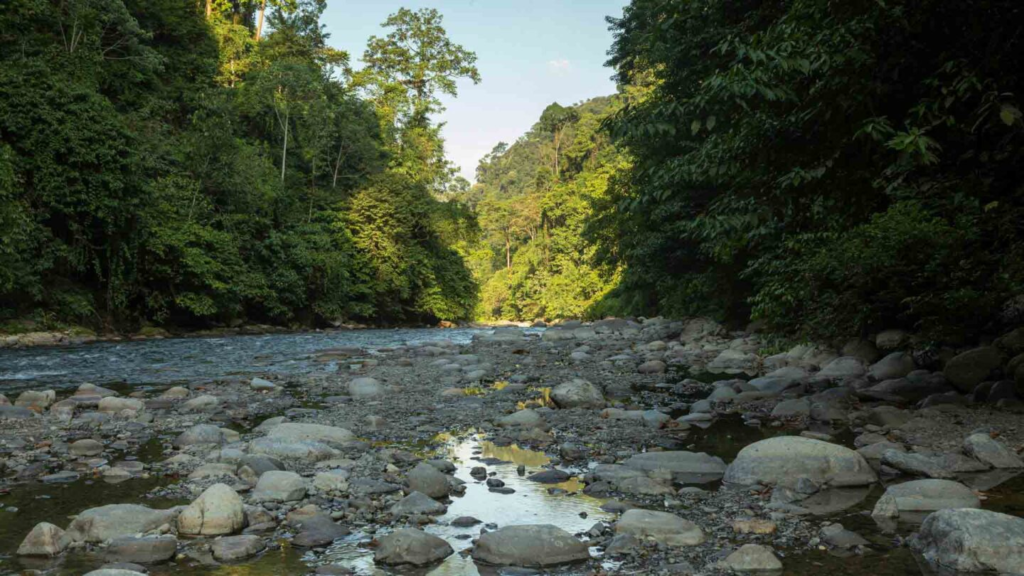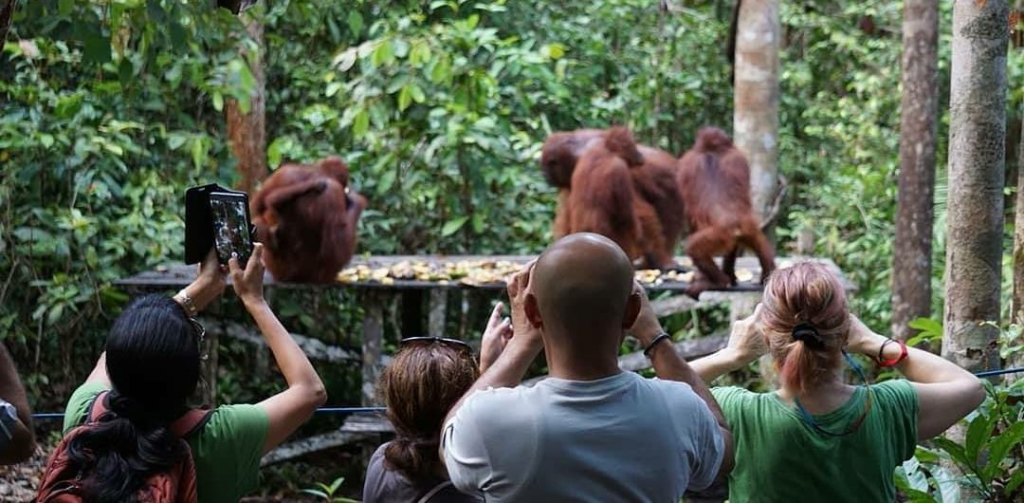
Indonesia, a sprawling archipelago with over 17,000 islands, is home to some of the world’s most biodiverse ecosystems. With tropical rainforests, mangroves, coral reefs, and unique volcanic landscapes, Indonesia’s national parks provide sanctuary to a stunning array of wildlife, including many rare and endangered species. For nature enthusiasts and eco-tourists, Indonesia’s national parks are a haven for exploration, adventure, and wildlife observation. This guide introduces Indonesia’s top national parks and highlights the incredible wildlife that call these parks home.
1. Komodo National Park

Location: Lesser Sunda Islands (Flores, Komodo, Rinca)
Komodo National Park is one of Indonesia’s most famous parks, designated a UNESCO World Heritage Site due to its unique ecosystem and home to the endangered Komodo dragon, the world’s largest lizard. This park offers visitors a chance to see Komodo dragons in their natural habitat, along with stunning marine biodiversity for divers and snorkelers.
- Wildlife Highlights: Komodo dragons, wild boars, water buffaloes, various birds, and vibrant marine life including manta rays and reef sharks.
- Best Activities: Guided hikes on Komodo and Rinca islands to see Komodo dragons, snorkeling and diving at Pink Beach and Manta Point.
- Best Time to Visit: April to June and September to November for optimal diving conditions and Komodo dragon sightings.
2. Gunung Leuser National Park

Location: Northern Sumatra
Gunung Leuser National Park is part of the UNESCO-listed Tropical Rainforest Heritage of Sumatra and is known for its rich biodiversity, including some of the last remaining populations of critically endangered Sumatran orangutans. This dense jungle park is ideal for trekking and offers a rare chance to encounter wild orangutans.
- Wildlife Highlights: Sumatran orangutans, tigers, rhinos, elephants, gibbons, and hornbills.
- Best Activities: Jungle trekking in Bukit Lawang, orangutan spotting, camping, and birdwatching.
- Best Time to Visit: June to September, which offers dry weather, making trekking conditions better.
3. Way Kambas National Park

Location: Lampung, Southern Sumatra
Way Kambas National Park is known as Indonesia’s oldest national park and is primarily dedicated to the conservation of critically endangered species. The park is a sanctuary for Sumatran elephants, tigers, and rhinos, and is an essential area for the preservation of Indonesia’s megafauna.
- Wildlife Highlights: Sumatran elephants, tigers, rhinos, clouded leopards, and various bird species.
- Best Activities: Elephant conservation tours, rhino spotting, and guided safaris for tiger sightings.
- Best Time to Visit: May to September for favorable wildlife viewing conditions.
4. Ujung Kulon National Park

Location: Banten, Java
Ujung Kulon National Park is a UNESCO World Heritage Site and is Indonesia’s last refuge for the critically endangered Javan rhinoceros. The park offers lush forests, pristine beaches, and diverse wildlife, making it an incredible destination for ecotourism.
- Wildlife Highlights: Javan rhinoceros, banteng (wild cattle), deer, gibbons, hornbills, and dolphins along the coast.
- Best Activities: Jungle trekking, snorkeling, beach exploration, and wildlife observation.
- Best Time to Visit: April to October for dry conditions that make wildlife sightings and trekking more enjoyable.
5. Lorentz National Park

Location: Papua
Lorentz National Park, Indonesia’s largest national park and a UNESCO World Heritage Site, is renowned for its incredible diversity of ecosystems, ranging from tropical lowland rainforests to alpine tundra. The park is home to glaciers on the equator, a rarity, and offers a unique glimpse into the biodiversity of West Papua.
- Wildlife Highlights: Tree kangaroos, cassowaries, various endemic bird species, and unique alpine flora.
- Best Activities: Trekking through diverse ecosystems, birdwatching, and visiting the Carstensz Pyramid for mountaineering enthusiasts.
- Best Time to Visit: March to August for better weather, though conditions in high-altitude areas can be challenging year-round.
6. Tanjung Puting National Park

Location: Central Kalimantan, Borneo
Tanjung Puting National Park is famous for its orangutan conservation and is one of the best places to observe these majestic primates in the wild. The park’s lush rainforests, winding rivers, and conservation efforts make it an essential destination for wildlife enthusiasts and eco-tourists.
- Wildlife Highlights: Bornean orangutans, proboscis monkeys, macaques, clouded leopards, and exotic bird species.
- Best Activities: Riverboat cruises, orangutan observation at Camp Leakey, jungle trekking, and night safaris.
- Best Time to Visit: June to September for drier conditions, which make wildlife sightings more frequent.
7. Bali Barat National Park

Location: West Bali
Bali Barat National Park, also known as West Bali National Park, is the largest protected area in Bali and offers a mix of marine and terrestrial biodiversity. The park includes coral reefs, mangroves, savannas, and dense forests, making it a haven for diverse wildlife and excellent for eco-friendly activities.
- Wildlife Highlights: Bali starlings (endangered), banteng, wild boars, macaques, and various marine species.
- Best Activities: Snorkeling and diving in Menjangan Island, birdwatching, jungle trekking, and visiting mangrove forests.
- Best Time to Visit: April to October for optimal diving conditions and wildlife observation.
8. Bunaken Marine Park

Location: North Sulawesi
Bunaken Marine Park is one of Indonesia’s premier marine parks, known for its stunning coral reefs and abundant marine life. This park attracts divers from around the world who come to explore its crystal-clear waters and thriving underwater ecosystems.
- Wildlife Highlights: Sea turtles, reef sharks, clownfish, parrotfish, and over 3,000 species of marine life.
- Best Activities: Scuba diving, snorkeling, underwater photography, and coral reef exploration.
- Best Time to Visit: May to October for ideal underwater visibility and calm seas.
9. Rinjani National Park

Location: Lombok, West Nusa Tenggara
Rinjani National Park is dominated by Mount Rinjani, one of Indonesia’s highest volcanoes. The park’s rugged landscapes, waterfalls, hot springs, and challenging trekking trails make it popular among adventurous travelers seeking a unique hiking experience.
- Wildlife Highlights: Rusa deer, ebony leaf monkeys, rare bird species, and the sulfur crested cockatoo.
- Best Activities: Trekking to the crater lake, camping on the slopes of Mount Rinjani, and visiting nearby waterfalls.
- Best Time to Visit: April to December, with the dry season (April-September) being the best for trekking.
10. Kelimutu National Park

Location: Flores, East Nusa Tenggara
Kelimutu National Park is best known for its iconic tri-colored lakes, which change color due to mineral reactions in the water. These lakes are considered sacred by the locals and are a breathtaking natural wonder that attracts travelers from around the world.
- Wildlife Highlights: Various bird species, wild boars, and endemic flora.
- Best Activities: Hiking to the summit for a sunrise view of the lakes, exploring local villages, and learning about local folklore.
- Best Time to Visit: May to September for clear skies and optimal visibility.
Tips for Exploring Indonesia’s National Parks
- Respect Wildlife: Observe animals from a safe distance and avoid feeding or disturbing them. Remember, these parks exist to protect Indonesia’s precious wildlife.
- Pack Essentials: Carry essentials like water, insect repellent, sun protection, and sturdy footwear for trekking.
- Hire a Guide: Many parks offer guided tours with local experts who can enhance your experience with insights on wildlife and conservation.
- Follow Park Rules: Each park has specific regulations, such as no littering, staying on marked trails, and respecting cultural sites.
- Plan for Weather: Indonesia’s tropical climate means sudden rain showers, especially during the wet season. Plan accordingly and check the weather forecast.
Conclusion
Indonesia’s national parks are not just travel destinations—they are conservation areas that protect the country’s rich biodiversity and offer travelers a glimpse into its natural wonders. From dense jungles and towering volcanoes to pristine marine environments, these parks showcase the best of Indonesia’s landscapes and wildlife. For nature enthusiasts, these national parks offer unforgettable experiences, from spotting endangered species like orangutans and rhinos to diving among colorful coral reefs.
By exploring these parks responsibly, travelers can help preserve Indonesia’s ecological treasures and support conservation efforts that ensure these incredible habitats remain protected for future generations. So, whether you’re trekking through rainforests, diving into marine sanctuaries, or enjoying breathtaking volcanic landscapes, Indonesia’s national parks offer an adventure like no other.